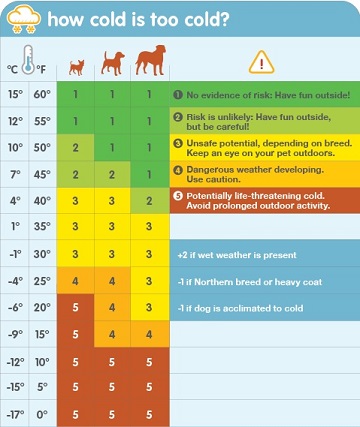Keeping Animals Safe During Winter Weather
Tuesday, January 1, 2019
As winter conditions return, we want to make sure our four legged friends are properly protected from cold temperatures, snow and wind. Here are some guidelines from the ASPCA:
- Never let your dog off the leash on snow or ice, especially during a snowstorm. Dogs can lose their scent in the snow and easily become lost. More dogs are lost during the winter than during any other season, so make sure your dog always wears an ID tag.
- If your large dog spends most of his time outside, take proper precautions during the colder months. Make sure your dog has an insulated and waterproof dog house and access to fresh water. Never leave your dog outside during a snowstorm or inclement weather including sleet, ice, snow, wind, or extreme cold.
- Bang loudly on the hood of your car before starting the engine. Outdoor, stray and feral cats sometimes sleep under car hoods to stay warm, but the fan belt can injure or kill a cat when the motor starts. Banging on the hood can help avoid catastrophe and give the cat a chance to escape.
- Never shave your dog down to the skin in winter, as a longer coat will provide more warmth. If your dog is long-haired, simply trim him to minimize the clinging ice balls, salt crystals and de-icing chemicals that can dry his skin, and don’t neglect the hair between his toes.
- Bathe your pets as little as possible during cold spells.Washing too often can remove essential oils and increase the chance of developing dry, flaky skin. If your pooch must be bathed, ask your vet to recommend a moisturizing shampoo and/or rinse.
- Pets burn extra energy by trying to stay warm in wintertime.Feeding your pet a little bit more during the cold weather months can provide much-needed calories, and making sure she has plenty of water to drink will help keep her well-hydrated and her skin less dry.
Click her for a link to the full article at Aspca.org.
A common question this time of year is, “How cold is too cold for my dog?” The answer is a bit complicated, but thankfully, the good folks at Tufts University already developed a system for animal welfare officers to reference. The Tufts Animal Condition and Care (TACC) system has many parts, ranging from body condition and environmental health to weather safety. This information has been adapted into an easy to understand chart—simply find the outdoor temperature (taking into account wind chill, or the temperature that it actually FEELS outside), look at the size of your dog, and voila! You know based on the color if it’s safe for your pup or not.
